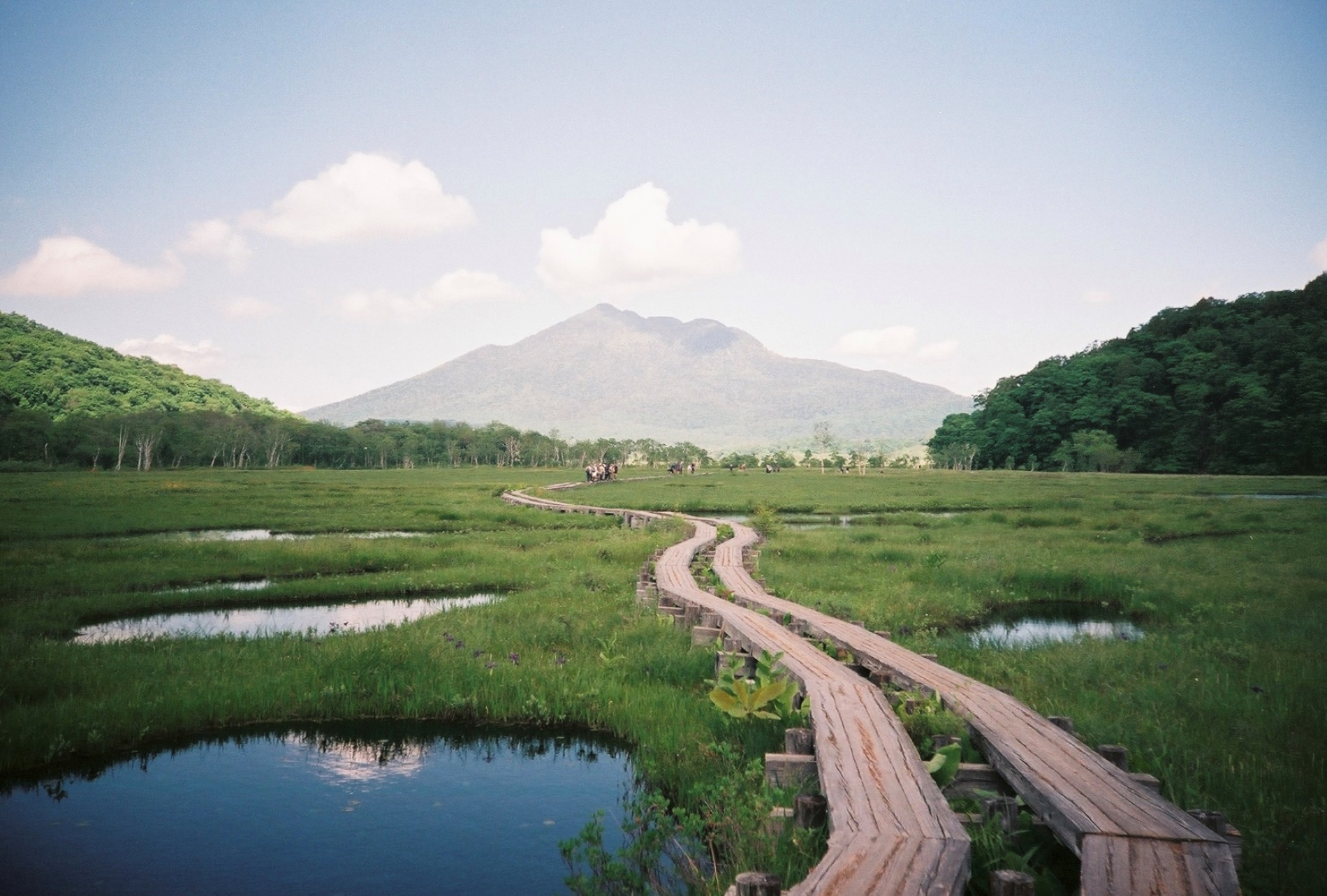Tourism EXPO Japan 2025 Aichi/Central Japan

National Park ( Nikko National Park / Oze National Park )
(Nikko National Park: A box-like park with a concentration of Japanese history and nature)
Nikko National Park is a national park with a long history, created on December 4, 1934. Most of the park area is mountainous land belonging to the Nasu Volcanic Zone, and includes Mount Shirane (2,578 m), the highest mountain in the northern Kanto region, Mount Nantai (2,486 m), which has long been famous as a mountain of faith, and Mount Chausu (Mt. Nasu) (1,917 m), which is still active as a volcano. The plateaus at the foot of these mountains are covered with lakes and marshes caused by volcanic activity, magnificent waterfalls, and valleys with beautiful autumn foliage.
At the same time, there is a wonderful fusion of natural scenery with numerous historical buildings, including shrines and temples that have been registered as World Heritage sites.
Nikko National Park is easily accessible from the Tokyo metropolitan area by train or car, and is very popular as a place where visitors can easily become familiar with nature, history, and culture.
(Oze National Park:Japan's Most Extensive Mountain Wetlands, Carpeted in Flowers, Encircled by Famous Peaks)
Oze National Park has a long history. In 1934, it was designated part of Nikko National Park, and then in 2007 the Oze Area was separated from Nikko National Park and combined with surrounding areas such as Mt. Aizu-Komagatake, Mt. Tashiro, and Mt. Taishaku to create Japan's 29th designated national park.
The name "Oze" is widely known due to its mention in Natsu-no Omoide ("Summer Memories"), a nationally beloved song. The region is characterized by its beautiful scenery, ranging from Ozegahara Plateau, the largest high moor on Honshu, and Lake Ozenuma, which was formed by the damming of the headwaters of the Tadami River due to volcanic eruptions, to the surrounding mountains, including Mt. Shibutsu, Mt. Hiuchigatake, Mt. Aizu-Komagatake, Mt. Tashiro, and Mt. Taishaku. Although Oze has faced the threat of development numerous times, its precious nature has been preserved through the cooperation of many people, and the park is also referred to as the "Starting Point for Nature Conservation in Japan."
Nikko National Park is a national park with a long history, created on December 4, 1934. Most of the park area is mountainous land belonging to the Nasu Volcanic Zone, and includes Mount Shirane (2,578 m), the highest mountain in the northern Kanto region, Mount Nantai (2,486 m), which has long been famous as a mountain of faith, and Mount Chausu (Mt. Nasu) (1,917 m), which is still active as a volcano. The plateaus at the foot of these mountains are covered with lakes and marshes caused by volcanic activity, magnificent waterfalls, and valleys with beautiful autumn foliage.
At the same time, there is a wonderful fusion of natural scenery with numerous historical buildings, including shrines and temples that have been registered as World Heritage sites.
Nikko National Park is easily accessible from the Tokyo metropolitan area by train or car, and is very popular as a place where visitors can easily become familiar with nature, history, and culture.
(Oze National Park:Japan's Most Extensive Mountain Wetlands, Carpeted in Flowers, Encircled by Famous Peaks)
Oze National Park has a long history. In 1934, it was designated part of Nikko National Park, and then in 2007 the Oze Area was separated from Nikko National Park and combined with surrounding areas such as Mt. Aizu-Komagatake, Mt. Tashiro, and Mt. Taishaku to create Japan's 29th designated national park.
The name "Oze" is widely known due to its mention in Natsu-no Omoide ("Summer Memories"), a nationally beloved song. The region is characterized by its beautiful scenery, ranging from Ozegahara Plateau, the largest high moor on Honshu, and Lake Ozenuma, which was formed by the damming of the headwaters of the Tadami River due to volcanic eruptions, to the surrounding mountains, including Mt. Shibutsu, Mt. Hiuchigatake, Mt. Aizu-Komagatake, Mt. Tashiro, and Mt. Taishaku. Although Oze has faced the threat of development numerous times, its precious nature has been preserved through the cooperation of many people, and the park is also referred to as the "Starting Point for Nature Conservation in Japan."
Co-exhibitor of National Parks of Japan, Ministry of Environment.
Sanriku-Fukko National Park/Towada-Hachimantai National Park :
Amamigunto National Park :
Ashizuri-Uwakai National Park :
Aso-Kuju National Park :
Aso-Kuju National Park / Kirishima-Kinkowan National Park :
Chubusangaku National Park :
Chubusangaku National Park / Fuji-Hakone-Izu National Park :
Eco Tourism Promotion Council :
Eco Tourism Promotion Council<Kamiichi town, Toyama/Gero city, Gifu/Toba city, Mie> :
Ise-Shima National Park :
Kerama Islands National Park/Amami Islands National Park :
Keramashoto National Park :
Kirishima-Kinkowan National Park :
National Park ( Nikko National Park / Oze National Park ) :
National Park (Yambaru National Park) / (Yakushima Park) :
National Park(Daisen-Oki National park)/(San'inkaigan National Park) :
National Park(Joshin'etsukogen/Myoko-Togakushi renzan) :
National Parks (Ise-Shima National Park/Yoshino-Kumano National Park) :
National Parks of Japan (Setonaikai National Park / Ashizuri-Uwakai National Park) :
Setonaikai National Park :
Towada-Hachimantai National Park :
Yakushima (Island) National Park :
Yambaru National Park :
Yoshinokumano National Park :
| Booth No | E-035 |
|---|---|
| Area | Japan |
| Official site | https://www.japan.travel/national-parks/parks/ |
Photos




